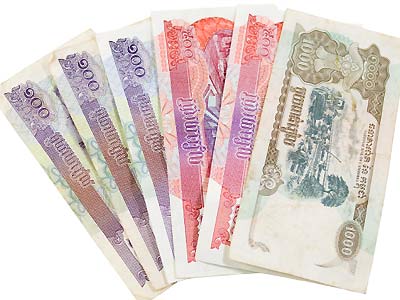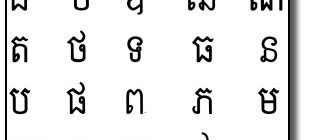Get the facts about the Cambodian currency and the intrinsic value that it holds against the currencies of other nations.
The currency of a country acts as a medium of exchange, unit of account and store of value. Every State has a dominant unit of exchange that facilitates transfer of goods and services. This is how Cambodian “Reil” is the official legal tender money in Cambodia, but a US dollar is also a de facto currency for an average visitor. In spite of the fact that currency includes both paper money and coins, Cambodia has a coin free economy.
The Cambodian currency notes are colorful and have pictures of Angkor temples on them. The 500 “reil” note sports the picture of “ Angkor wat” , which is one of the oldest temples in Cambodia, whereas a 50 “reil” note has the image of “Banteay Srei” made on it which is a Cambodian temple dedicated to the Hindu god “Shiva”.
Cambodian note denominations
Cambodian “reil” comes in 50, 100, 500, 1000, 2000, 5000, 10000, 50000 and 100000 denominations, but from amongst them all the red colored 500 and blue colored 1000 “reil” notes are most common and useful. Inspired by the beauty of the country a lot of people visit Cambodia, this is the main reason why all the hotels, restaurants, taxis, buses and other service providers accept the U.S Dollar as well.
When it comes to exchange rates Cambodian currency is relatively low, as 1US dollar can approximately buy 4000 “reil”. The tourists should be careful while exchanging the US dollar bills, as a tiniest tear in a large denomination US dollar note renders it all but useless in Cambodia, this can be rejected by the banks and the money changers.
History of “reil”
In the Cambodian economy there have been two distinct “reil”, the first one was being issued by the monetary authorities between 1953 and 1975 while the second one started on April 1, 1980. The first “reil” issued was subdivided into 100 “centimes” which is abbreviated to cents. The first issuance of Cambodian “reil” matched with those of Laos and South Vietnam, but a true “reil” was issued in 1955 by the National Bank of Cambodia.
Khmer Rouge also had its role to play with regards to the Cambodian currency; this was a communist political ruling party which was later renamed as “Democratic Kapuchea”. Along with the Central bank of Cambodia the political party also issued bank notes but these were not printed as money and were abolished after the party took over Cambodia.
After Vietnam invaded Cambodia, “reil” was re-established. Economy was quite disrupted; as a result, the Central bank increased the money supply by giving it away to the masses in order to encourage its use.
The value of Cambodian currency
The economy of Cambodia took some time to standardize itself and come to a point where the country could develop. Over the past five years the monetary authorities have kept the value of “reil” at a lower side as compared to US dollars, so that foreign investors coming from a strong economy could make some lucrative investments.
A strong currency always work wonders for the country as it portrays a strong economy and consistent growth. This shows that currency is easy to sort in Cambodia but it should be converted into other forms as it is not accepted over the counters once a visitor leaves Cambodia.





